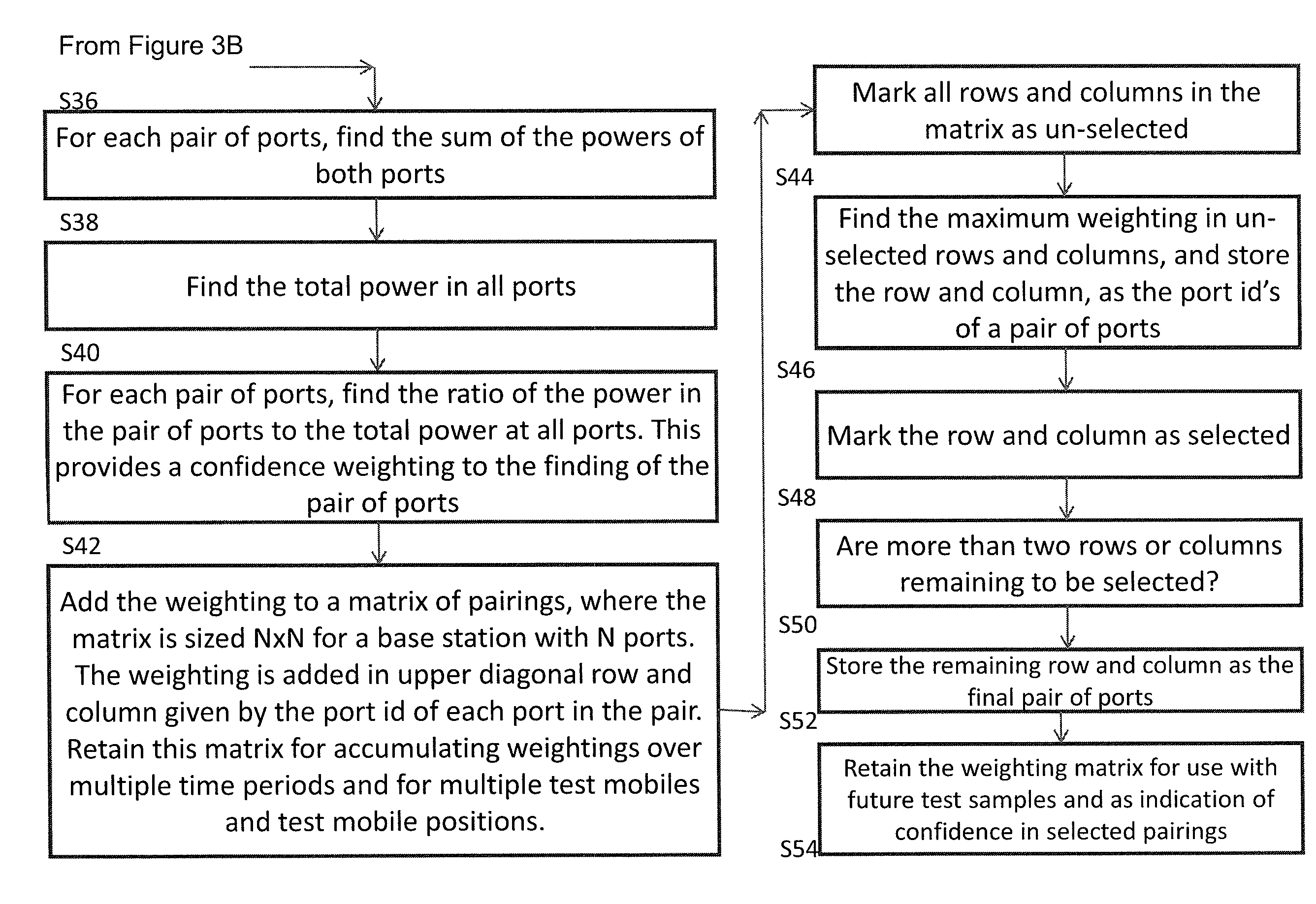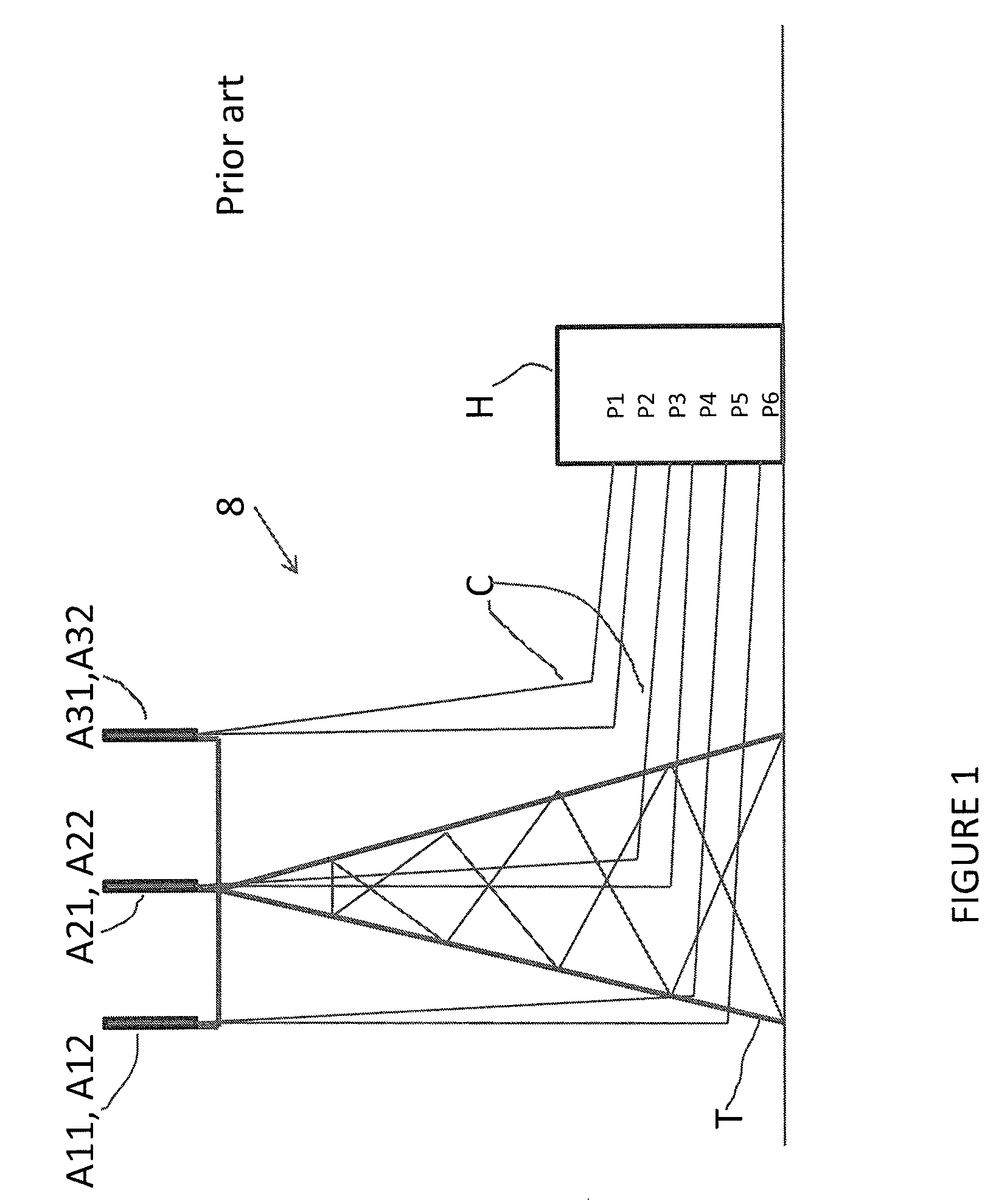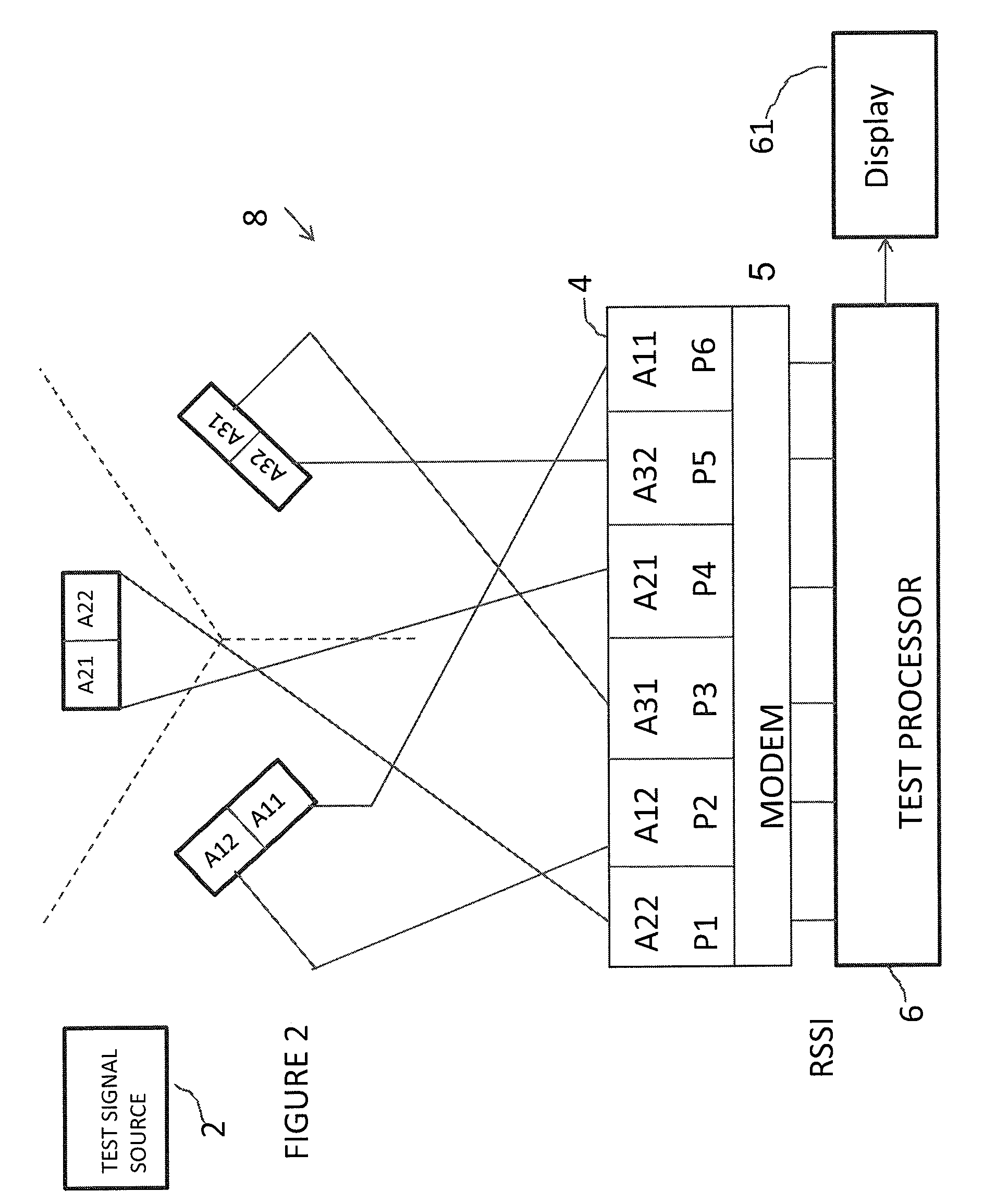Antenna auto-configuration
a technology of auto-configuration and antenna, applied in the field of mobile telephony, can solve problems such as easy overlapping of coverage, faults in the connection of antennas or transceivers, and errors in beam pointing, so as to achieve the effect of reducing overlap
- Summary
- Abstract
- Description
- Claims
- Application Information
AI Technical Summary
Benefits of technology
Problems solved by technology
Method used
Image
Examples
Embodiment Construction
[0042]This illustrative description of FIGS. 1 to 8 assumes for ease of description that a base station has three sectors, each sector has two physical antennas which form a polarisation diversity pair, and each antenna has a single main beam with a fixed pointing direction. However the invention is not limited to that and as will be described many other arrangements are possible within the scope of the invention.
Determining Cable Configuration
[0043]Referring to FIG. 1, an example of a conventional base station has a high tower supporting three diversity pairs of antennas: A11, A12; A21, A22; and A31, A32. The antennas of each pair are polarized at orthogonal polarizations for example + and −45 degrees. The six antennas are connected by respective cables to ports P1 to P6 of equipment housed in a cabinet or other housing H at ground level. Each port is connected to a signal processor which includes a radio transceiver and other signal processing circuitry. In the base station of FIG...
PUM
 Login to View More
Login to View More Abstract
Description
Claims
Application Information
 Login to View More
Login to View More - R&D
- Intellectual Property
- Life Sciences
- Materials
- Tech Scout
- Unparalleled Data Quality
- Higher Quality Content
- 60% Fewer Hallucinations
Browse by: Latest US Patents, China's latest patents, Technical Efficacy Thesaurus, Application Domain, Technology Topic, Popular Technical Reports.
© 2025 PatSnap. All rights reserved.Legal|Privacy policy|Modern Slavery Act Transparency Statement|Sitemap|About US| Contact US: help@patsnap.com



